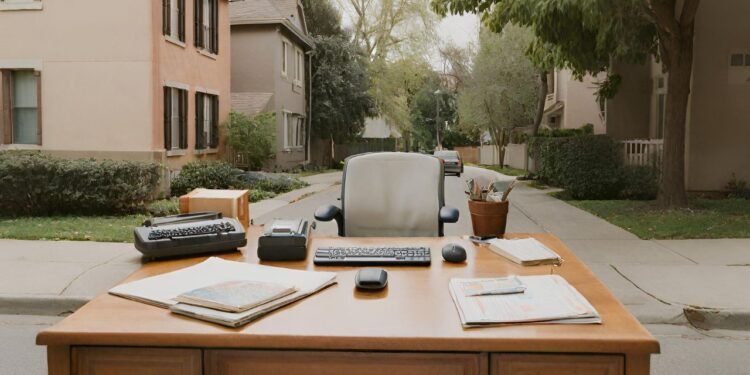- Local coworking enables workers to combine their personal and working lives to enhance their well-being.
- Workers living in U.K. commuter towns have expressed enormous interest in local coworking spaces.
- Local coworking is a key part of complete community transformation in residential areas, and may contribute to the success of 15-minute cities.
Coworking spaces first emerged in central commercial districts decades ago. Since the pandemic, though, operators are seeing more benefits of locating workspaces in residential areas. Companies are also changing their workplace strategies to support people who want to work closer to home, which is having an incredible impact on local communities under a 15-minute city concept.
Going hybrid
One of the key driving forces behind the shift in workspace location preferences was the pandemic and the resulting desire to create a hybrid working lifestyle that cuts the commute. In 2019, a one-way commute to work took the typical U.S. worker 28 minutes, on average. 40% of U.S. workers would travel for 30 minutes or longer, whilst 10% took an hour or so to commute, according to The New York Times.
Now, the likelihood of bringing workers back to the office 100% of the time is almost zero. Workers who enjoyed a pause on commuting during the pandemic are now opting for flexible working 3-5 days per week, on average, to reclaim time and save money that was otherwise spent getting back and forth to an office. Hybrid working is no longer a nice-to-have, but a must-have.
Gone are the days of shiny skyscrapers in city centers; corporations are decentralizing their office strategy to support workers closer to home. Even before 2020, forward-thinking companies were taking up leases in local workspaces. The change is now coming more rapidly since return-to-the-office efforts have largely flopped. Equally, residential developments are now coming to commercial areas.
For example, the City of London is reversing strict enforcement that traditionally banned residential buildings from the commercial area — 1,500 new homes have been commissioned in the Square Mile, with a completion date of 2030.
Contributing to 15-minute cities
Local coworking enables workers to combine their personal and working lives to enhance their well-being. This, subsequently, might contribute to the success of the 15-minute city. Pioneered by urbanist Carlos Moreno, 15-minute cities utilize every piece of land within a 15-minute walk or bike ride distance to seamlessly integrate each aspect of people’s daily lives: workplaces, grocery stores, healthcare facilities, educational institutions, and green spaces, to name only a few.
Well established 15-minute cities foster convenience for all. It swaps the commute for active travel methods, a bike ride or an easy walk to work, taking more cars off the road, and making neighborhoods healthier, safer, and more pleasant to live in. The 15-minute city is a centralized approach to the fragmented urban sprawl that isolates business districts from residential areas.
IWG reported in 2021 that during the pandemic, there was enormous interest in local coworking spaces in U.K. commuter towns. This comes as no surprise; commuter towns were planned areas that encouraged workers to live outside of the city center and commute in. Now, these residents are seeking local workspaces.
In Uxbridge, demand grew by 175%. High Wycombe saw a 52% increase, and a 24% increase was experienced in Hayes. Demand in London dropped between 10-20%. Flexible workspace giants Regus and Spaces saw new opportunities for deals outside of the city, and new coworking operators like Co-Space sprung up exclusively in London’s commuter towns of Stevenage, Milton Keynes, and Reading.
Thinking globally, acting locally
Commuter towns used to be soulless during working hours, but the pandemic and continued flexible working strategies have had a knock-on effect on these areas, which have seen improved footfall on the high street and growth in the local economy.
According to the BBC, food and beverage providers, including cafes, pubs, takeaway services, and hair and beauty salons in the U.K. have increased footfall and profit since 2020, which saw the opening of 700 pubs and bars, 2,000 cafes or tea rooms, and 4,600 fast-food outlets. Local coworking is a key part of that complete transformation — having a workspace on the high street gives workers options to visit local service providers to buy coffee and lunch. This attracts even more businesses to the area.
In 15-minute cities, people live and work amongst their neighbors. They stop and chat when they bump into each other on the street and talk to shopkeepers when they pop into their local shop or cafe for lunch; this strengthens the community.
Opening a coworking space in a residential area is a common hybrid worker’s desire. This space would also become a part of the local ecosystem, bringing incredible opportunities for small businesses and people seeking employment in the surrounding area.
Choosing a coworking space in a residential neighborhood, particularly in a 15-minute city concept area, can have several advantages:
- Reduced Commute Times: The idea of a 15-minute city is that everything you need for work, leisure, and life should be within a 15-minute walk or bike ride. This drastically cuts down on commute times, which can improve work-life balance and reduce stress.
- Community Building: Working in a residential area can foster a stronger sense of community. You’ll be working around people who live in the same area, which can create opportunities for networking and collaboration that wouldn’t exist in a more impersonal office building.
- Work-Life Balance: Having your workspace close to home can make it easier to balance your personal and professional life. It becomes much simpler to run errands, take care of children or pets, or just take a break from work when your home is nearby.
- Local Economy Support: By having a coworking space in a residential neighborhood, you’re more likely to support local businesses for lunch, coffee breaks, and after-work activities. This helps to stimulate the local economy and creates a mutually beneficial relationship between the coworking space and the surrounding businesses.
- Less Crowded: Residential areas tend to be less crowded than commercial districts, which can make for a more relaxed, peaceful working environment. This can be particularly beneficial for tasks that require concentration and focus.
- Flexibility: In a 15-minute city, or just simply a residential area, the proximity of various facilities and amenities provides a high level of flexibility. If you need to switch from work mode to personal mode quickly, having everything close by is highly convenient.
- Sustainability: Reducing the need for long commutes by car contributes to lower carbon emissions and less traffic congestion. This aligns with increasing global efforts towards sustainability and reducing our environmental impact.
While there are many advantages, the suitability of a coworking space in a residential area also depends on the nature of your work, personal preferences, and lifestyle needs.


 Dr. Gleb Tsipursky – The Office Whisperer
Dr. Gleb Tsipursky – The Office Whisperer Nirit Cohen – WorkFutures
Nirit Cohen – WorkFutures Angela Howard – Culture Expert
Angela Howard – Culture Expert Drew Jones – Design & Innovation
Drew Jones – Design & Innovation Jonathan Price – CRE & Flex Expert
Jonathan Price – CRE & Flex Expert












